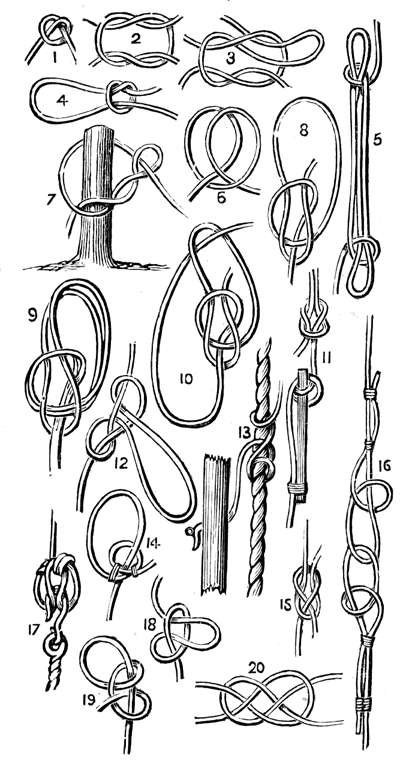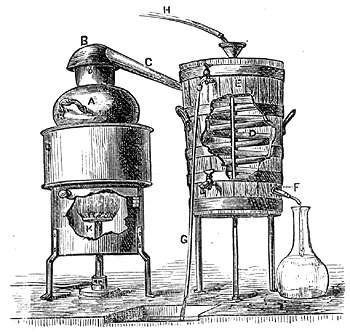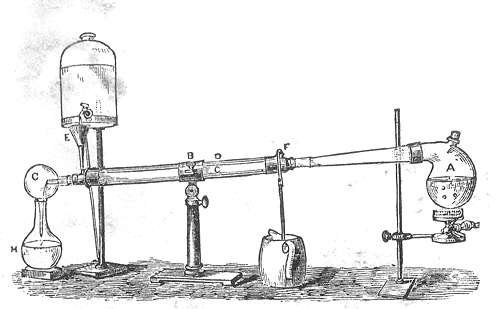 |
|||||
| Contents | About this site | Download the Cyclopedia | Awards | Links |
Contents About this site Download the Cyclopedia Awards Links
MISCELLANEOUS ILLUSTRATIONS
 WILD ASS OF PERSIA. |
 SPANISH MULE. |

DEVON BULL. 
SHEEP. |
 FILIGREE ORNAMENT. |
 HAIR-DRESSES, 13TH. CENTURY. |
 HAIR-DRESSES, 1782. |
 HEAD-DRESSES, AND FASHION OF WEARING PATCHES, 1739. |
 HAIR, END OF THE 13TH. CENT. |
 HAIR, 14TH. CENT. |
 HEAD-DRESS, 1780. |
 HEAD-DRESS, 1789. |
 HAIR. MAGNIFIED SECTION OF A SMALL BLACK HUMAN HAIR.
a, Basement membrane of the follicles. |
 SKIN.
A, Vertical section of the skin (magnified). |
 THE TWENTY MOST USEFUL KNOTS.
2, Right or reef-knot, for securing all lashings where the ends of the rope meet together. 3, Draw-knot, which offers great facility in undoing. 4, Running-knot, used to bind or draw anything close. 5, Sheepshank, serving to shorten a rope without cutting it or unfastening the ends. 6, Clove-hitch, which binds with excessive force, and by which alone a weight can be hung to a smooth pole. 7, Timber-hitch, very useful in hauling to move a weight. 8, Single bowline-knot, difficult to undo, useful to throw over a post &c., to haul on, used for the draw-loop of a slip noose. 9, Double bowline-knot, for slinging a cask. 10, Running bowline-knot. 11, Woolding or packing-stick hitch, used to tighten ropes. 12, Men's harness hitch, passing over the shoulder and under the opposite arm of men drawing a carriage, &c. 13, Stopper hitch, for stoppering the fall of a tackle, &c. 14, Inside clinch, for fastening a cable to the anchor ring, &c. 15, Common or sheet bend, a very secure method of joining two ropes, or fastening a rope to a loop. 16, Hawser bend, for joining two ropes, easily undone. 17, Cat's paw, the turn in the bight of a rope, for hooking a tackle to it. 18, Dragrope or lever-hitch, used for fixing hand-spikes or capstanbars to the ropes attached to heavy carriages, &c., which have to be moved by men. 19, Half-hitch, cast on the bight of a rope. 20, Carrick bend. A wall-knot is a knot made at the end of a rope to prevent it from passing through a hole. |

A, Copper tube, into which steam passes by the extremity, I, and which, dividing at the other end into two branches, conveys the steam to the two cylinders which contain the pistons. B. Handle of the lever, by which the motion is reversed. It imparts motion to a rod C, which communicates with a steam-chest. C, Rod by which the motion is reversed. D, lower part of the fire-box and ash-pall. E, Escape-pipe for the steam after acting on the pistons. F. Iron cylinder containing a piston, P. There is one of these on each side of the engine, and the one in front is represented as being left open in order that the piston may be seen. G. Rod which opens the regulator-valve, I, in order to allow the steam to pass into the tube, A. In the drawing, the driver holds in his hand the lever which moves this rod. H, Cock for blowing off water from the boiler. I, Regulator valve, which is opened and closed by hand, so as to regulate the quantity of steam passing into the cylinders. K, Large rod connecting the head of the piston rod of the crank, M, of the driving wheel. L, Lamp for use by night. M, Crank, which transmits the motion of the piston to the axle of the large wheel. N. Coupling-iron, by which the tender is attached. O. Fire-door, by which coke is introduced. P. Metallic piston, the rod of which is connected with the rod, K. Q. Chimney, by which both steam and smoke escape. R, R, Feed pipes, through which the water in the tender passes to two force-pumps, which are not shown in the drawing. S. Guard for removing obstructions on the rails. T. T. Springs on which the engine rests. U. U. Iron rails fixed in chairs on wooden sleepers. V, Frame of the stuffing-box of the cylinder. X, X, Cylindrical boiler, covered with mahogany staves, which, from their bad conductivity, hinder the loss of heat. The level of the water is just below the tube, A. In the water are the tubes, a, a, through which the smoke and flames pass into the smoke-box. Y. Smoke-box, in which the fire-tubes, a, terminate. Z. Z. Fire-box, covered by a dome, into which the steam passes. a, Brass tubes, of which there are 125, open at, both ends, terminating at one end in the fire-box, and at the other in the smoke-box. These tubes transmit to the water the heat of the fire. b, b, Toothed segment, placed on the side of the fire-box, and in which the arm of the lever, B, works. When the handle is pushed forward, or pulled back as far as it can go, the engine is in full forward or backward gear respectively; the intermediate teeth give various rates of expansion in backward and forward motion, the middle tooth being a dead point. e, Cases containing springs by which the safety-valves, i, are regulated. g, Signal-whistle. i, Safety valves. m, m, Steps. n, Glass-tube, showing the height of water in the boiler. r, r, Guiding-rods for keeping the motion of the piston in a straight line. t, t, Blowing-off taps, for use when the pistons are in motion. v, Rod by which motion is transmitted to these taps. |

A, is a copper boiler, containing the water to be distilled; B, is the head of the still which lifts out at b, and is connected by the neck (with the worm D, a pewter pipe coiled round in the tub E, and issuing at F. The steam from the boiler, passing into the worm, is condensed to the liquid state being cooled by-the water in contact with the worm; this water becoming heated, passes off through the pipe G, being replaced by cold water, which is allowed to enter through H. A rosette gas-burner, K, on Bunsen's principle, is very convenient for a small still of that description. |

A, is a stoppered retort, the neck of which fits into the tube of a Liebig's condenser (B), which consists of a glass tube (C), fitted by means of corks into a glass, copper, or tin tube (D), into which a stream of cold water is passed by the funnel F. the heated water running out through the upper tube F. The water furnished bv the condensation of the steam passes through the quilled receiver G, into the flask H. Heat is gradually applied to the retort by a ring gasburner. |
|